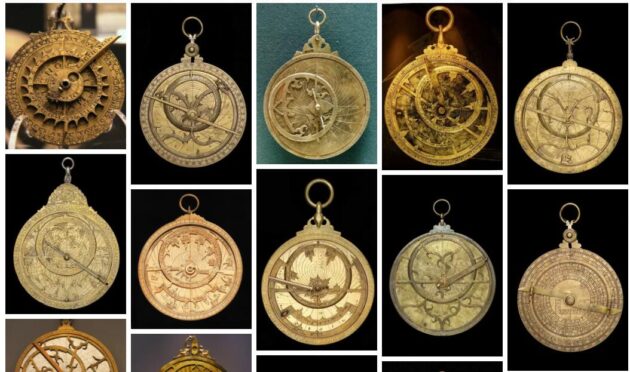The etymological origin is the first thing that we are going to discover of the word that we now have before us. Specifically, we can establish that astrolabe derives from the Greek, exactly from “astrolabion”, which is an instrument used to measure the stars and the height of the sun.
Exactly, it is the result of the sum of two terms of the mentioned language:
-The noun “aster”, which is equivalent to “star”.
-The name “lambion”, which is synonymous with “pot holder”.
The term astrolabe refers to a device that was used in the field of astronomy to check the location of the stars. With the astrolabe, it was possible to indicate the height and position of the stars in the sky.
Astronomers and sailors, among others, used astrolabes to find stars and analyze how they moved: in this way, they could obtain information on time and latitude and even establish distance measurements.
The astrolabe was the most widely used navigation instrument for several centuries. The technological development, little by little, made it lose preponderance. Today there are much more advanced tools that offer information with greater precision.
Specifically, we can establish that the astrolabe became the fundamental instrument for sailors for many centuries. It was until 1750, approximately, when the sextant appeared on the scene. And is that the latter had greater precision, hence it was used not only in the aforementioned maritime sector but also outside it and in other areas such as air.
Although it is true that there is no concrete data that establishes the name of the inventor of the astrolabe, all the theories come to indicate that this is none other than the Greek mathematician Ptolemy (100 – 170). A figure is very important for his studies and advances in areas such as astrology, when creating horoscopes, as well as in geography and optics, among other sectors.
However, it should not be overlooked either that other important personalities are considered to have developed and perfected this original, such as Hypatia of Alexandria and her father, the astronomer Theon.
There were, however, various types of astrolabes. The planispheric astrolabes, for example, could represent the stars in one latitude. In contrast, universal astrolabes had the ability to perform representation in all of the existing latitudes.
The operation of the astrolabe is based on the celestial sphere: an ideal type sphere that is concentric with the globe and where, apparently, the stars move. The instrument allows you to draw a stereographic projection, which consists of graphically representing the surface of the sphere in a plane.
The astrolabe is made up of a motherboard (a graduated circumference) with a needle that points to the stars. The scale on the edge of the circumference can show degrees and time. In the front sector, two discs are inserted, one with the coordinates that correspond to a latitude and the other that rotates and that represents the locations of the Moon, the Sun and other stars.

